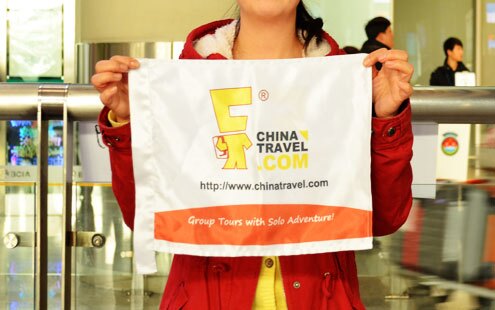Tour Code: xa-8
Departure Date: Daily
Features:  Private Tour Guide
Private Tour Guide  Private Car & Driver
Private Car & Driver  Authentic Local Restaurants
Authentic Local Restaurants
The home of 13 of China’s most progressive dynasties is a most fascinating place indeed. Today, modern Xian is flush with top tourism destinations and museums that present ancient and contemporary Chinese culture and history in all of its glory. This comprehensive 7 day tour led by one of our expert bilingual guides will take you to see the Terracotta Warriors and Horses, celebrated Shaanxi History Museum, Xian city wall, Qianling Tomb, and the stunning Mount Huashan standing watch over the land as it has for millions of years.
 | Grand Noble Hotel
| Grand Noble Hotel  | Titan Times Hotel Xian
| Titan Times Hotel Xian 
- The Terracotta Warriors and Horses: Discovered accidentally in 1974, this incredible army of over 7000 soldiers, archers, horses and chariots in full battle array has guarded Emperor Qin's tomb since 210BC. Each figure is unique, and the painstaking repair and excavation continues in 3 pits which are protected inside huge hangars. 1.5 hours from Xian, there is also an excellent museum and film about the history of the vaults. Photos (no flash) are allowed. Wear comfortable walking shoes.
- Big Wild Goose Pagoda: A major Buddhist site, the simple, elegant brick Pagoda stands in the grounds of the attractive Da Ci'en Temple. The Pagoda was built in the 7th century to house the Buddhist materials that Xuanzang (Tripitaka) brought back from his epic journey to India. The Temple complex has several large halls with some great Buddhist statues and murals.
 | Grand Noble Hotel
| Grand Noble Hotel  | Titan Times Hotel Xian
| Titan Times Hotel Xian 
- Shaanxi History Museum: The history of Shaanxi is said to be the history of China, and this museum is quite simply one of the nation's best. Four major galleries in large, Tang-style buildings house a vast and impressive collection, beautifully displayed. Most of the item labels are in English, although some other information on the exhibitions is not, but your guide can help here. Wear comfortable walking shoes.
- Forest of Stele Museum: Forest of Steles in Xi'an was originally built in Northern Song Dynasty (1090 A.D.) when a large Confucian collection of steles cut in A.D. 837 - the oldest existing texts of the Confucian classics - was moved to it for safekeeping. All kinds of calligraphy and scripts tell stories, poems and reports from around the Empire. Other exhibits include early sculptures and objects from Imperial tombs.
- Xian City Wall with Bicycle: The walls, ramparts, gates and watchtowers form one of the oldest and most complete city defenses still around. Built in the 13th century on the foundations of the original Tang Forbidden City surrounding the city centre, it is a major landmark, and the best preserved, as well as the oldest and largest of the city defense systems in China. We operate this with bicycle. If the weather is not good for biking on the city wall, we will substitute a visit to the Bell Tower. Your guide will be very glad to take you the Bell Tower after you have been to look at the city wall.
- Muslim Quarters: The Muslim quarters lies 100 meters west of the Bell tower in downtown Xi'an. The 500 meters long avenue paved by bluestones are dotted with many unique stall, souvenir shop, café and bars which are mostly run by Muslim people. Tourists, especially from overseas come and shop here.
 | Grand Noble Hotel
| Grand Noble Hotel  | Titan Times Hotel Xian
| Titan Times Hotel Xian 
- Cable Car on Mt. Huashan(round way): You can enjoy the scenery along the way to Mt. Huashan by cable car.
- Huashan Mountain: Huashan is famous for its precipice, located in Hayin city, Shaanxi province. It is one of the noted Five Mountains in China, and once called the West Mountain in ancient times. The mountain has three summits: the south peak, 2160.5m above sea level, the east Morning Sun Peak and the west Lotus Flower Peak.
 | Grand Noble Hotel
| Grand Noble Hotel  | Titan Times Hotel Xian
| Titan Times Hotel Xian 
- Huangdi Mausoleum: The Mausoleum of Yellow Emperor is on the top of the Bridge Hill, one km to the Huang County in the north, 200 km from Xi'an.It is the tomb of the Chinese people's ancestor, never to lose it.
-The Xuanyuan Temple locates at the foot of the Qiao Mountain. Inward the temple there are Shan Gate, Set Heart right Pavilion, Stele Pavilion, Audience Hall in the order of South, North,East and West. Moreover, there is an ancient-builded reception room and a showroom for cultural relics.
 | Grand Noble Hotel
| Grand Noble Hotel  | Titan Times Hotel Xian
| Titan Times Hotel Xian 
- Qianling Tomb: Built in 684 AD, the mausoleum is the joint tomb of Emperor Tang Gaozong (Li Zhi, 628 A.D.-683 A.D.) and Empress Wu Zetian (624 A.D.-705 A.D.), the only Empress in Chinese history.
- Famen Temple: It locates to the west of Xian city and sits in the 120km Fufeng County. The temple has a history of 1700. This Buddhist temple, which records mention as far back as 67AD, contains a 13-storied brick pagoda as part of the monastery. This pagoda fell down in the rain in August, 1981 and revealed a 1000 year old underground vault full with 2,400 treasures of the Tang and previous dynasties given as offerings. These included gold and silver utensils, glazed wares, porcelains, pearls, precious stones and textiles, as well as religious items. The biggest treasure is a finger bone of Buddha offered to the Emperor of China during the Tang dynasty. Heshi Buddhist Pagoda was built in Famen Temple in May 2009. It is in the shape of two palms with ten fingers clinging together. It is the tallest Buddhist pagoda in the world.
- The Tomb of Yangguifei: The Tomb of Yangguifei,Yangguifei is concubine of Emperor Tang Minghuang.The tomb is on the Mawei slope which is 12km to the northwest of Xingping city.
 | Grand Noble Hotel
| Grand Noble Hotel  | Titan Times Hotel Xian
| Titan Times Hotel Xian 
We use different hotels for different tour classes while the itinerary is the same. Deluxe Class is usually staying at a 5-star hotel, Superior Class at a 4-star hotel and Tourist Class at a 3-star level hotel. The prices for one person are based on sharing twin hotel rooms with another guest. A supplement is necessary if you want to book single rooms. And the prices may rise during national holidays, such as the National Day (September 30th to October 6th) and Chinese New Year (late January or early February)

All of our tour guides are certificated and experienced. They are local experts with detailed knowledge about attractions, history, culture and more. They know the best places to visit, can give you advice on restaurants that serve great local food, the best places to shop, or theaters for the best shows in town.

We use the modern air-conditioned luxury cars for families or 2-3 persons and small buses for small groups of 4-7 persons.
We ensure that all of the vehicles that we use are well-maintained (not over 4 years) and always very clean. Our drivers are very nice and careful with over 5-year drive experience.
Sally Guo
Travel Advisor
